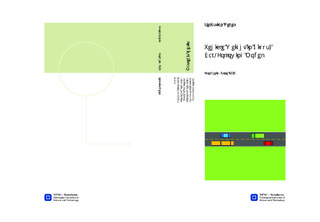Vehicle Weight in Gipps' Car-Following Model
Master thesis
Permanent lenke
http://hdl.handle.net/11250/232460Utgivelsesdato
2013Metadata
Vis full innførselSamlinger
Sammendrag
Car-following models are mathematical models, which describe the situation where vehicles drive behind each other on a single lane road section with no overtaking possibilities. The purpose of the models is to estimate how a vehicle reacts to the behavior of the vehicle ahead. A weakness in these models is that they do not take the weight of each vehicle into account. It can however be shown that a vehicle?s weight affects its driving behavior.The purpose of this master?s thesis is to investigate the ability of Gipps? car-following model to reproduce differences in driving behavior caused by differences in vehicles? weight. A modified version of the model where weight is included as a parameter is to be estimated and compared to the original model and field data.The method used was to make a Matlab script which simulates vehicle driving on a road section with Gipps? model. The model results were compared to data collected from a point detector equipped with Weigh-in-motion technology. Time-gap distributions were chosen as the measure against which the models were compared.In the estimated modified model the vehicles are assigned a gross weight, which is picked from an inputted weight distribution. The deceleration parameters of the vehicles are then varied according to vehicle weight.The conclusion of the study is that the original Gipps' model can be calibrated to produce accurate results in uncongested flow. However several vehicle types would need to be defined in order for this to hold for all vehicles. A modified version of the model where vehicle weight is included as a parameter rather than separating vehicles according to type, produced accurate time-gap distributions for all vehicles, with a lower number of input parameters than the original model.However there are aspects of the driving behavior and other traffic situation for which the modified model is not compared. The areas of application of this modified model are also limited today because it requires detailed data on the vehicle weight distribution, which is not widely available and of poor quality.
